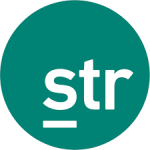HENDERSONVILLE, Tennessee, and MILWAUKEE—The Baird/STR Hotel Stock Index rose 0.7% in April to a level of 5,925. Year to date through the first four months of 2022, the stock index increased 3.1%.
“Hotel stocks increased modestly in April but were significant relative outperformers as the broader travel recovery accelerated, particularly domestically,” said Michael Bellisario, senior hotel research analyst and director at Baird. “Underlying hotel fundamentals continued their rebound in April, especially in some of the harder-hit urban markets, and better-than-expected intra-quarter updates from companies boosted investor sentiment and stock prices during the month. While broader macroeconomic risks remain elevated (for example, higher interest rates, higher gas prices, Russia/Ukraine conflict, and growing recession concerns), the broader travel momentum is strong and pent-up demand continues to surprise to the upside.”
“April continued the trends of rising demand and inflation-influenced pricing,” said Amanda Hite, STR’s president. “Corporate transient and group demand are climbing at a healthy rate, pointing to the continued return of business travel. Our March P&L data also showed the strongest GOPPAR level since November 2019, meaning that the strong rebound in top-line performance is translating to an improving bottom line. When looking at the pipeline, the number of rooms in construction remains on a downward trajectory, giving the majority of operators another tailwind that should last through this year and 2023.”
In April, the Baird/STR Hotel Stock Index surpassed both the S&P 500 (-8.8%) and the MSCI US REIT Index (-4.6%).
The Hotel Brand sub-index rose 0.5% from March to 10,561, while the Hotel REIT sub-index jumped 1.5% to 1,353.
About the Baird/STR Hotel Stock Index and Sub-Indices
The Baird/STR Hotel Stock Index was set to equal 1,000 on 1 January 2000. Last cycle, the Index peaked at 3,178 on 5 July 2007. The Index’s low point occurred on 6 March 2009 when it dropped to 573.
The Hotel Brand sub-index was set to equal 1,000 on 1 January 2000. Last cycle, the sub-index peaked at 3,407 on 5 July 2007. The sub-index’s low point occurred on 6 March 2009 when it dropped to 722.
The Hotel REIT sub-index was set to equal 1,000 on 1 January 2000. Last cycle, the sub-index peaked at 2,555 on 2 February 2007. The sub-index’s low point occurred on 5 March 2009 when it dropped to 298.
The Baird/STR Hotel Stock Index and sub-indices are available exclusively on Hotel News Now. The indices are cobranded and were created by Robert W. Baird & Co. (Baird) and STR. The market-cap-weighted, price-only indices comprise 20 of the largest market-capitalization hotel companies publicly traded on a U.S. exchange and attempt to characterize the performance of hotel stocks. The Index and sub-indices are maintained by Baird and hosted on Hotel News Now, are not actively managed, and no direct investment can be made in them.
As of 30 April 2022, the companies that comprised the Baird/STR Hotel Stock Index included: Apple Hospitality REIT, Ashford Hospitality Trust, Chatham Lodging Trust, Choice Hotels International, DiamondRock Hospitality Company, Hersha Hospitality Trust, Hilton Inc., Host Hotels & Resorts, Hyatt Hotels, InterContinental Hotels Group, Marriott International, Park Hotels & Resorts, Inc., Pebblebrook Hotel Trust, RLJ Lodging Trust, Ryman Hospitality Properties, Service Properties Trust, Summit Hotel Properties, Sunstone Hotel Investors, Wyndham Hotels & Resorts, and Xenia Hotels & Resorts.
This communication is not a call to action to engage in a securities transaction and has not been individually tailored to a specific client or targeted group of clients. Research reports on the companies identified in this communication are provided by Robert W. Baird & Co. Incorporated, and are available to clients through their Baird Financial Advisor. This communication does not provide recipients with information or advice that is sufficient on which to base an investment decision. This communication does not take into account the specific investment objectives, financial situation or need of any particular client and may not be suitable for all types of investors. Recipients should consider the contents of this communication as a single factor in making an investment decision. Additional fundamental and other analyses would be required to make an investment decision about any individual security identified in this release.


